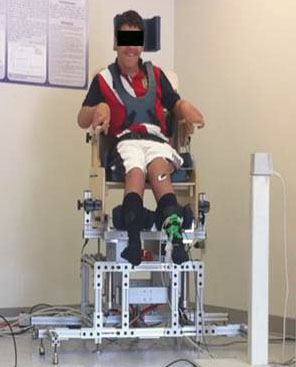Reduction of Spasticity and Dystonia Prior to Exoskeleton Use by People with Cerebral Palsy
Investigation of the benefits of low frequency/high amplitude and high frequency/low amplitude vertical mechanical stimulation in respectively reducing spasticity and dystonia that interferes with the use of robotic exoskeletons by individuals with cerebral palsy. Work involves use of a custom developed mechanical chair and a whole body vibration platform, and evaluation with the Wartenberg Pendulum Knee Test.
 |
 |
 |
 |
